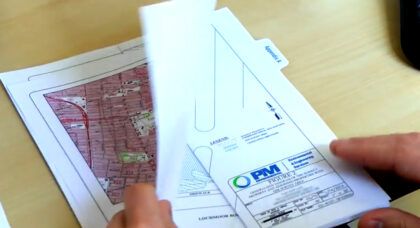New Hurdles to Closing an SBA Loan on Contaminated Property in Michigan
Closing a US Small Business Administration (SBA) loan on a contaminated site just became more complicated in Michigan.
Recent changes made by the Michigan Department of Environmental Quality (MDEQ) in late 2015 are requiring deeper investigation into potential Vapor Intrusion issues as well as limiting the use of the Documentation of Due Care Compliance report to current owners, leaving prospective purchasers to seek alternate options when purchasing contaminated property using an SBA-backed loan.
As part of the loan approval process, SBA lending for contaminated properties requires one of the nine mitigating factors described in the SBA Standard Operating Procedures (SOP) be fulfilled. These typically include remediating the contamination, receiving a closure or No Further Action (NFA) approval from a governmental entity, depositing escrow funds to complete remediation or achieve closure/NFA or completing an “other factor”.
A Baseline Environmental Assessment (BEA) and Documentation of Due Care Compliance (DDCC) report were commonly used to meet the NFA mitigating factor. They demonstrate the property is contaminated (BEA) and the borrower has liability protection and documents that all due care obligations are currently met and no response activities are required for compliance (DDCC).
Before 2010, the MDEQ would “affirm”, or give its stamp of approval, to a BEA for current or prospective property owners if required for SBA/MSHDA loans.
As part of the 2010 revisions to Part 201 of the Natural Resources and Environmental Protection Act (NREPA), the MDEQ would no longer affirm BEAs. It would only affirm Due Care Plans (now known as Documentation of Due Care Compliance, or DDCC) for current or prospective property owners.
In late 2015, the MDEQ went a step further stating they will no longer affirm DDCCs for prospective purchasers, only for current property owners. The reasoning being that the DDCC documents that the current owner of the property is currently in compliance and the law is written in a way that the DEQ would not be able to comment on a new owner being compliant.
So what options does a prospective buyer have if they need the approval on an SBA-backed loan to complete the transaction?
If the contamination on the property is NOT due to a regulated Underground Storage Tank, it is covered by Part 201, and prospective owners can submit Response Activity Plans (RAPs) for MDEQ affirmation. This documents what prospective owners will do to meet due care obligations.
Items of note on the RAP document:
Approval of a RAP is anticipated to allow the loan to close, however, the approved activities need to be completed and will likely be part of the loan review documentation.
If the MDEQ exceeds the 150 day timeframe (180 days if public comment is required) to review a document, the plan is considered approved. However, the MDEQ has been completing them within a 45 day timeframe (similar to the DDCCs).
In addition to prospective owners, current owners may use a RAP in situations where response activities are required on a property and have not yet been completed and where the timeline of the loan will not allow the response activities to be completed before closing the loan.
What if the contamination on the property is due to a regulated Underground Storage Tank?
Part 213 of the NREPA regulates UST contamination, and it is completely separate from Part 201. A Response Activity Plan can’t be submitted for an exclusively Part 213 site. Without the option of submitting a RAP or DDCC, prospective buyers of UST contaminated properties may find themselves in a complicated situation.
One of the alternate mitigating factors, such as escrow funds for completing cleanup or becoming the owner and fulfilling the due care obligations and submitting a DDCC are possible, but can represent significantly higher cost and risk and can have an extended timeline.
There are certain circumstances where a property is contaminated by both non-UST and UST related contamination (i.e. co-mingled or mixed contaminates) and an argument may be made for submitting a Response Activity Plan to address the entire property and all releases.
Looking more closely at Vapor Intrusion
Changes to the ASTM 1527-13, the guiding standard for Phase I environmental site assessments, put increased emphasis on the issue of Vapor Intrusion (VI) in 2013, and it continues to be an important factor in due care obligations.
A VI evaluation is mandatory and the MDEQ is requesting additional investigation if VOC impact is present in soil and or groundwater above Vapor Intrusion Screening Levels. Michigan has a tiered approach, so different levels are acceptable depending on the intended use of a property.
The extra time and cost required for investigation will have an impact on DDCCs and RAPs.
Final Considerations
Closing an SBA loan using an approved DDCC or RAP is becoming more challenging, time consuming and expensive. Early communication between all stakeholders in a transaction is imperative to set expectations and close loans as efficiently as possible. PM Environmental has extensive experience navigating the SBA Standard Operating Procedures on contaminated properties and we have successfully assisted in closing loans for numerous clients. Please contact us at (800) 313-2966 with any questions or concerns you may have regarding this process.
Publication Details
Date
August 24, 2016



